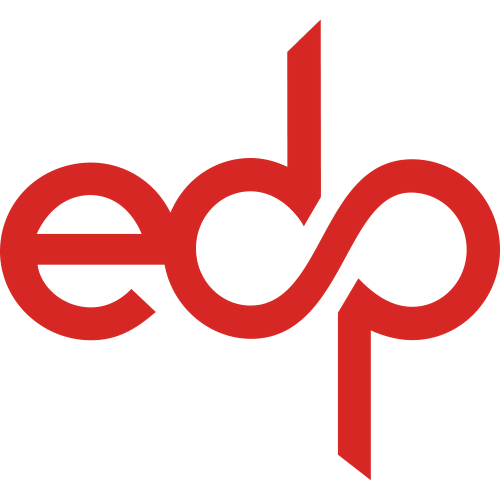Optics and Laser Technology, volume 111, pages 121-128
Origin of n-type conductivity in ZnO crystal and formation of Zn and ZnO nanoparticles by laser radiation
1
Institute of Technical Physics, Faculty of Materials Science and Applied Chemistry, Riga Technical University, P. Valdena 3/7, Riga, LV-1048, Latvia
|
2
Research Institute of Electronics of Shizuoka University, 3-5-1, Johoku, Naka-ku, Hamamatsu 432-8011, Japan
|
Publication type: Journal Article
Publication date: 2019-04-01
Journal:
Optics and Laser Technology
Quartile SCImago
Q1
Quartile WOS
Q1
Impact factor: 5
ISSN: 00303992
Electronic, Optical and Magnetic Materials
Atomic and Molecular Physics, and Optics
Electrical and Electronic Engineering
Abstract
Electrical and optical properties of hydrothermally grown ZnO crystal, as well as structural changes at its surface have been investigated before and after irradiation by pulsed Nd:YAG laser. The spreading resistance measurements have shown a monotonous increase of conductivity by three orders of magnitude when the laser intensity I has been varied from zero to 290 MW/cm2. The PL spectra have revealed an increase of concentration of Zn interstitials at the surface after irradiation by I = 3.5 MW/cm2. Formation of Zn nanoparticles on the crystal surface has been observed at I > 290 MW/cm2. The study of surface structure at I = 315 MW/cm2 has shown that these Zn nanoparticles tend to transform into ZnO nanoparticles after an irradiation by more than 2 laser pulses. A theoretical model of thermal generation and redistribution of point defects has been elaborated to explain the origin of experimentally observed n-type conductivity. According to this model and experimental facts, the n-type conductivity originates from Zn interstitials, which are moved to the crystal surface by large temperature gradient during the laser processing. As a result, Zn-rich surface layer is formed and Zn nanoparticles grow, which are later oxidized into ZnO nanoparticles. We have shown a possibility to control the size distribution of these nanoparticles by choosing appropriate intensity and number of laser pulses.
Top-30
Citations by journals
|
1
2
|
|
|
Journal of Materials Science: Materials in Electronics
2 publications, 8.7%
|
|
|
Journal of Applied Physics
1 publication, 4.35%
|
|
|
MATEC Web of Conferences
1 publication, 4.35%
|
|
|
Applied Surface Science
1 publication, 4.35%
|
|
|
Materials Today Communications
1 publication, 4.35%
|
|
|
Micro and Nanostructures
1 publication, 4.35%
|
|
|
Optik
1 publication, 4.35%
|
|
|
Optics and Laser Technology
1 publication, 4.35%
|
|
|
Journal of Luminescence
1 publication, 4.35%
|
|
|
Surface and Coatings Technology
1 publication, 4.35%
|
|
|
Nuclear Instruments and Methods in Physics Research, Section B: Beam Interactions with Materials and Atoms
1 publication, 4.35%
|
|
|
Ceramics International
1 publication, 4.35%
|
|
|
Progress in Organic Coatings
1 publication, 4.35%
|
|
|
IEEE Access
1 publication, 4.35%
|
|
|
Journal of Materials Chemistry C
1 publication, 4.35%
|
|
|
Journal of Electronic Materials
1 publication, 4.35%
|
|
|
Journal of Science: Advanced Materials and Devices
1 publication, 4.35%
|
|
|
Journal of Materials Research and Technology
1 publication, 4.35%
|
|
|
Journal of Optics (India)
1 publication, 4.35%
|
|
|
Russian Chemical Reviews
1 publication, 4.35%
|
|
|
Analytical Biochemistry
1 publication, 4.35%
|
|
|
Journal of Saudi Chemical Society
1 publication, 4.35%
|
|
|
1
2
|
Citations by publishers
|
2
4
6
8
10
12
14
|
|
|
Elsevier
14 publications, 60.87%
|
|
|
Springer Nature
4 publications, 17.39%
|
|
|
American Institute of Physics (AIP)
1 publication, 4.35%
|
|
|
EDP Sciences
1 publication, 4.35%
|
|
|
IEEE
1 publication, 4.35%
|
|
|
Royal Society of Chemistry (RSC)
1 publication, 4.35%
|
|
|
Autonomous Non-profit Organization Editorial Board of the journal Uspekhi Khimii
1 publication, 4.35%
|
|
|
2
4
6
8
10
12
14
|
- We do not take into account publications without a DOI.
- Statistics recalculated only for publications connected to researchers, organizations and labs registered on the platform.
- Statistics recalculated weekly.
{"yearsCitations":{"type":"bar","data":{"show":true,"labels":[2019,2020,2021,2022,2023,2024],"ids":[0,0,0,0,0,0],"codes":[0,0,0,0,0,0],"imageUrls":["","","","","",""],"datasets":[{"label":"Citations number","data":[4,4,1,4,3,7],"backgroundColor":["#3B82F6","#3B82F6","#3B82F6","#3B82F6","#3B82F6","#3B82F6"],"percentage":["17.39","17.39","4.35","17.39","13.04","30.43"],"barThickness":null}]},"options":{"indexAxis":"x","maintainAspectRatio":true,"scales":{"y":{"ticks":{"precision":0,"autoSkip":false,"font":{"family":"Montserrat"},"color":"#000000"},"stacked":false},"x":{"ticks":{"stepSize":1,"precision":0,"font":{"family":"Montserrat"},"color":"#000000"},"stacked":false}},"plugins":{"legend":{"position":"top","labels":{"font":{"family":"Montserrat"},"color":"#000000"}},"title":{"display":true,"text":"Citations per year","font":{"size":24,"family":"Montserrat","weight":600},"color":"#000000"}}}},"journals":{"type":"bar","data":{"show":true,"labels":["Journal of Materials Science: Materials in Electronics","Journal of Applied Physics","MATEC Web of Conferences","Applied Surface Science","Materials Today Communications","Micro and Nanostructures","Optik","Optics and Laser Technology","Journal of Luminescence","Surface and Coatings Technology","Nuclear Instruments and Methods in Physics Research, Section B: Beam Interactions with Materials and Atoms","Ceramics International","Progress in Organic Coatings","IEEE Access","Journal of Materials Chemistry C","Journal of Electronic Materials","Journal of Science: Advanced Materials and Devices","Journal of Materials Research and Technology","Journal of Optics (India)","Russian Chemical Reviews","Analytical Biochemistry","Journal of Saudi Chemical Society"],"ids":[20208,11951,6399,12539,12228,28042,16053,8155,7075,12521,3324,15103,17883,25260,3848,18295,3870,18488,18917,23802,22528,19515],"codes":[0,0,0,0,0,0,0,0,0,0,0,0,0,0,0,0,0,0,0,0,0,0],"imageUrls":["\/storage\/images\/resized\/voXLqlsvTwv5p3iMQ8Dhs95nqB4AXOG7Taj7G4ra_medium.webp","\/storage\/images\/resized\/ARM4e6URKRsbRZvIF0vFis9DjxGloBjnBYJXbHmZ_medium.webp","\/storage\/images\/resized\/7GcDgL5Sa2zewDk4sRy4fs0GznbYZIsSV9wqMs28_medium.webp","\/storage\/images\/resized\/GDnYOu1UpMMfMMRV6Aqle4H0YLLsraeD9IP9qScG_medium.webp","\/storage\/images\/resized\/GDnYOu1UpMMfMMRV6Aqle4H0YLLsraeD9IP9qScG_medium.webp","\/storage\/images\/resized\/GDnYOu1UpMMfMMRV6Aqle4H0YLLsraeD9IP9qScG_medium.webp","\/storage\/images\/resized\/GDnYOu1UpMMfMMRV6Aqle4H0YLLsraeD9IP9qScG_medium.webp","\/storage\/images\/resized\/GDnYOu1UpMMfMMRV6Aqle4H0YLLsraeD9IP9qScG_medium.webp","\/storage\/images\/resized\/GDnYOu1UpMMfMMRV6Aqle4H0YLLsraeD9IP9qScG_medium.webp","\/storage\/images\/resized\/GDnYOu1UpMMfMMRV6Aqle4H0YLLsraeD9IP9qScG_medium.webp","\/storage\/images\/resized\/GDnYOu1UpMMfMMRV6Aqle4H0YLLsraeD9IP9qScG_medium.webp","\/storage\/images\/resized\/GDnYOu1UpMMfMMRV6Aqle4H0YLLsraeD9IP9qScG_medium.webp","\/storage\/images\/resized\/GDnYOu1UpMMfMMRV6Aqle4H0YLLsraeD9IP9qScG_medium.webp","\/storage\/images\/resized\/6scCJegesojp2jubwY3uKCzTAmgsaH2GIFlg6Hfk_medium.webp","\/storage\/images\/resized\/leiAYcRDGTSl5B1eCnwpSGqmDEUEfDPPoYisFGhT_medium.webp","\/storage\/images\/resized\/voXLqlsvTwv5p3iMQ8Dhs95nqB4AXOG7Taj7G4ra_medium.webp","\/storage\/images\/resized\/GDnYOu1UpMMfMMRV6Aqle4H0YLLsraeD9IP9qScG_medium.webp","\/storage\/images\/resized\/GDnYOu1UpMMfMMRV6Aqle4H0YLLsraeD9IP9qScG_medium.webp","\/storage\/images\/resized\/V0ahwkzp9hrsvrljh50lHUEHKtdNrQAw6nzOMOZp_medium.webp","\/storage\/images\/resized\/9Mus3KG1Tkd7Bwaurt8H3RwWh0CxRlGoO6ng9UK1_medium.webp","\/storage\/images\/resized\/GDnYOu1UpMMfMMRV6Aqle4H0YLLsraeD9IP9qScG_medium.webp","\/storage\/images\/resized\/9z7b0TQJNgUxZHYXLrTmbnjJn9y5iq56Wxtqb1Lv_medium.webp"],"datasets":[{"label":"","data":[2,1,1,1,1,1,1,1,1,1,1,1,1,1,1,1,1,1,1,1,1,1],"backgroundColor":["#3B82F6","#3B82F6","#3B82F6","#3B82F6","#3B82F6","#3B82F6","#3B82F6","#3B82F6","#3B82F6","#3B82F6","#3B82F6","#3B82F6","#3B82F6","#3B82F6","#3B82F6","#3B82F6","#3B82F6","#3B82F6","#3B82F6","#3B82F6","#3B82F6","#3B82F6"],"percentage":[8.7,4.35,4.35,4.35,4.35,4.35,4.35,4.35,4.35,4.35,4.35,4.35,4.35,4.35,4.35,4.35,4.35,4.35,4.35,4.35,4.35,4.35],"barThickness":13}]},"options":{"indexAxis":"y","maintainAspectRatio":false,"scales":{"y":{"ticks":{"precision":0,"autoSkip":false,"font":{"family":"Montserrat"},"color":"#000000"},"stacked":false},"x":{"ticks":{"stepSize":null,"precision":0,"font":{"family":"Montserrat"},"color":"#000000"},"stacked":false}},"plugins":{"legend":{"position":"top","labels":{"font":{"family":"Montserrat"},"color":"#000000"}},"title":{"display":true,"text":"Journals","font":{"size":24,"family":"Montserrat","weight":600},"color":"#000000"}}}},"publishers":{"type":"bar","data":{"show":true,"labels":["Elsevier","Springer Nature","American Institute of Physics (AIP)","EDP Sciences","IEEE","Royal Society of Chemistry (RSC)","Autonomous Non-profit Organization Editorial Board of the journal Uspekhi Khimii"],"ids":[17,8,250,76,6953,123,9422],"codes":[0,0,0,0,0,0,0],"imageUrls":["\/storage\/images\/resized\/GDnYOu1UpMMfMMRV6Aqle4H0YLLsraeD9IP9qScG_medium.webp","\/storage\/images\/resized\/voXLqlsvTwv5p3iMQ8Dhs95nqB4AXOG7Taj7G4ra_medium.webp","\/storage\/images\/resized\/ARM4e6URKRsbRZvIF0vFis9DjxGloBjnBYJXbHmZ_medium.webp","\/storage\/images\/resized\/7GcDgL5Sa2zewDk4sRy4fs0GznbYZIsSV9wqMs28_medium.webp","\/storage\/images\/resized\/6scCJegesojp2jubwY3uKCzTAmgsaH2GIFlg6Hfk_medium.webp","\/storage\/images\/resized\/leiAYcRDGTSl5B1eCnwpSGqmDEUEfDPPoYisFGhT_medium.webp","\/storage\/images\/resized\/9Mus3KG1Tkd7Bwaurt8H3RwWh0CxRlGoO6ng9UK1_medium.webp"],"datasets":[{"label":"","data":[14,4,1,1,1,1,1],"backgroundColor":["#3B82F6","#3B82F6","#3B82F6","#3B82F6","#3B82F6","#3B82F6","#3B82F6"],"percentage":[60.87,17.39,4.35,4.35,4.35,4.35,4.35],"barThickness":13}]},"options":{"indexAxis":"y","maintainAspectRatio":false,"scales":{"y":{"ticks":{"precision":0,"autoSkip":false,"font":{"family":"Montserrat"},"color":"#000000"},"stacked":false},"x":{"ticks":{"stepSize":null,"precision":0,"font":{"family":"Montserrat"},"color":"#000000"},"stacked":false}},"plugins":{"legend":{"position":"top","labels":{"font":{"family":"Montserrat"},"color":"#000000"}},"title":{"display":true,"text":"Publishers","font":{"size":24,"family":"Montserrat","weight":600},"color":"#000000"}}}},"yearsCitationsQuartiles":{"type":"bar","data":{"show":true,"labels":[2019,2020,2021,2022,2023,2024],"ids":[],"codes":[],"imageUrls":[],"datasets":[{"label":"Q4","backgroundColor":"rgb(221,90,78)","data":[0,0,0,0,0,0],"percentage":["0","0","0","0","0","0"]},{"label":"Q3","backgroundColor":"rgb(251, 163,83)","data":[0,0,0,0,1,2],"percentage":["0","0","0","0","4.35","8.7"]},{"label":"Q2","backgroundColor":"rgb(232, 213, 89)","data":[3,2,0,1,0,1],"percentage":["13.04","8.7","0","4.35","0","4.35"]},{"label":"Q1","backgroundColor":"rgb(164, 207, 99)","data":[1,2,1,1,2,4],"percentage":["4.35","8.7","4.35","4.35","8.7","17.39"]},{"label":"Quartile not defined","backgroundColor":"#E5E7EB","data":[0,0,0,2,0,0],"percentage":["0","0","0","8.7","0","0"]}]},"options":{"indexAxis":"x","maintainAspectRatio":true,"scales":{"y":{"ticks":{"precision":0,"autoSkip":false,"font":{"family":"Montserrat"},"color":"#000000"},"stacked":true},"x":{"ticks":{"stepSize":1,"precision":0,"font":{"family":"Montserrat"},"color":"#000000"},"stacked":true}},"plugins":{"legend":{"position":"top","labels":{"font":{"family":"Montserrat"},"color":"#000000"}},"title":{"display":true,"text":"Citations quartiles by SCImago per year","font":{"size":24,"family":"Montserrat","weight":600},"color":"#000000"}}}},"yearsCitationsQuartilesWs":{"type":"bar","data":{"show":true,"labels":[2019,2020,2021,2022,2023,2024],"ids":[],"codes":[],"imageUrls":[],"datasets":[{"label":"Q4","backgroundColor":"rgb(221,90,78)","data":[0,0,0,0,0,0],"percentage":["0","0","0","0","0","0"]},{"label":"Q3","backgroundColor":"rgb(251, 163,83)","data":[0,1,0,0,1,0],"percentage":["0","4.35","0","0","4.35","0"]},{"label":"Q2","backgroundColor":"rgb(232, 213, 89)","data":[3,1,0,1,1,3],"percentage":["13.04","4.35","0","4.35","4.35","13.04"]},{"label":"Q1","backgroundColor":"rgb(164, 207, 99)","data":[1,2,1,1,1,3],"percentage":["4.35","8.7","4.35","4.35","4.35","13.04"]},{"label":"Quartile not defined","backgroundColor":"#E5E7EB","data":[0,0,0,2,0,1],"percentage":["0","0","0","8.7","0","4.35"]}]},"options":{"indexAxis":"x","maintainAspectRatio":true,"scales":{"y":{"ticks":{"precision":0,"autoSkip":false,"font":{"family":"Montserrat"},"color":"#000000"},"stacked":true},"x":{"ticks":{"stepSize":1,"precision":0,"font":{"family":"Montserrat"},"color":"#000000"},"stacked":true}},"plugins":{"legend":{"position":"top","labels":{"font":{"family":"Montserrat"},"color":"#000000"}},"title":{"display":true,"text":"Citations quartiles by WoS per year","font":{"size":24,"family":"Montserrat","weight":600},"color":"#000000"}}}}}
Are you a researcher?
Create a profile to get free access to personal recommendations for colleagues and new articles.
Metrics
Cite this
GOST |
RIS |
BibTex
Cite this
GOST
Copy
Kaupužs J. et al. Origin of n-type conductivity in ZnO crystal and formation of Zn and ZnO nanoparticles by laser radiation // Optics and Laser Technology. 2019. Vol. 111. pp. 121-128.
GOST all authors (up to 50)
Copy
Kaupužs J., Medvids A., Onufrijevs P., MIMURA H. Origin of n-type conductivity in ZnO crystal and formation of Zn and ZnO nanoparticles by laser radiation // Optics and Laser Technology. 2019. Vol. 111. pp. 121-128.
Cite this
RIS
Copy
TY - JOUR
DO - 10.1016/j.optlastec.2018.09.037
UR - https://doi.org/10.1016/j.optlastec.2018.09.037
TI - Origin of n-type conductivity in ZnO crystal and formation of Zn and ZnO nanoparticles by laser radiation
T2 - Optics and Laser Technology
AU - Kaupužs, Jevgenijs
AU - Medvids, Arturs
AU - Onufrijevs, Pavels
AU - MIMURA, H.
PY - 2019
DA - 2019/04/01 00:00:00
PB - Elsevier
SP - 121-128
VL - 111
SN - 0030-3992
ER -
Cite this
BibTex
Copy
@article{2019_Kaupužs,
author = {Jevgenijs Kaupužs and Arturs Medvids and Pavels Onufrijevs and H. MIMURA},
title = {Origin of n-type conductivity in ZnO crystal and formation of Zn and ZnO nanoparticles by laser radiation},
journal = {Optics and Laser Technology},
year = {2019},
volume = {111},
publisher = {Elsevier},
month = {apr},
url = {https://doi.org/10.1016/j.optlastec.2018.09.037},
pages = {121--128},
doi = {10.1016/j.optlastec.2018.09.037}
}









